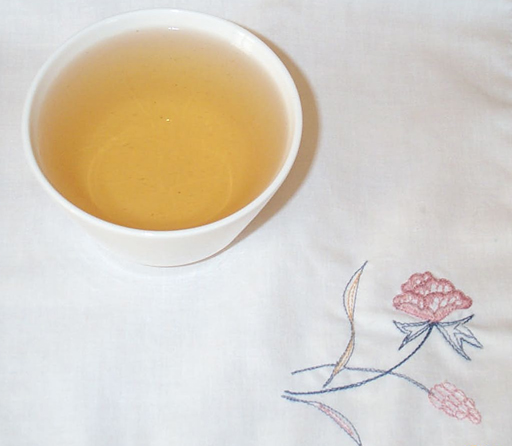 Before beginning with the individual recipes for this tea party, I want to say a word about the tea itself. White tea has been a favorite in China for centuries but here in the US we’re just getting to know it.
Before beginning with the individual recipes for this tea party, I want to say a word about the tea itself. White tea has been a favorite in China for centuries but here in the US we’re just getting to know it.
White tea is made from immature tea leaves that are picked shortly before the buds have fully opened. The tea takes its name from the silver fuzz that still covers the buds which turns white when the tea is dried. The exact proportion of buds to leaves varies depending on the variety of white tea.
Early spring provides the best white tea. When the time is right, workers carefully hand-pick the silver buds and select leaves. There is no picking on rainy days or when frost is on the ground. White tea can only be picked for a short time each year, sometimes only two days, making it rare and precious.
The buds and leaves are then steamed and slowly dried. Unlike black or green tea, white tea is not rolled, and only slightly oxidized, making it the least processed tea. The result? A pale tea with a sweet, silky flavor. People who have tried both note that white tea lacks the “grassy” aftertaste so often associated with green tea. Furthermore, studies indicate that white tea is better for you.
A study at Pace University in 2004 showed white tea had more anti-viral and anti-bacterial qualities than green tea. White tea contains higher catechin (an antioxidant) levels than green tea due to its lack of processing. Catechin concentration is greatest in fresh, unbroken and unfermented tea leaves. Furthermore, one study examining the composition of brewed green and white teas found that white tea contained more gallic acid, theobromine, and caffeine. White tea contains less fluoride than green tea, since it is made from young leaves only.
Brewing white tea is a bit different from brewing black tea. Generally, around 2 to 2.5 grams or 1.5 teaspoons of white tea per 6 ounces of water should be used. White teas should be prepared with 180° water (not boiling) and steeped for 2 to 3 minutes. Finer teas expose more flavor and complexity with no bitterness if the brewing time is increased. On successive brews (white teas produce three very good brews and a fourth that is passable), extend the time by several minutes per. The third brew may require as long as 15 minutes to develop well. Temperature is crucial - if it is too hot, the brew will be bitter and the finer flavors will be overpowered.
If you haven’t tried white tea yet, what are you waiting for!




